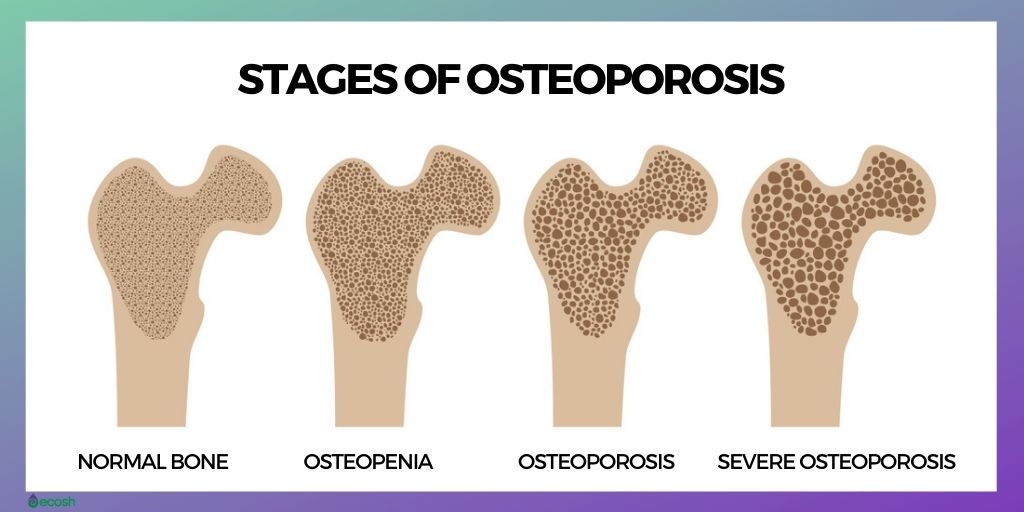
Stages of Osteoporosis
- Home
- Blog
- Stages of Osteoporosis
Osteoporosis is a condition characterized by weakened bones that are more susceptible to fractures. The disease progresses through several stages, which can vary in severity. Here’s a general outline of the stages:
1. Bone Density Loss (Early Stage)
- Description: In the early stages of osteoporosis, bone density starts to decrease, but it might not be noticeable without medical testing. This stage often occurs silently and may not show any obvious symptoms.
- Detection: Early bone loss can be detected through bone density tests, such as dual-energy X-ray absorptiometry (DEXA) scans. These tests measure bone mineral density (BMD) and help assess the risk of fractures.
2. Osteopenia (Moderate Stage)
- Description: is a condition where bone density is lower than normal but not low enough to be classified as osteoporosis. It is considered a precursor to osteoporosis.
- Symptoms: There are typically no symptoms at this stage. Individuals may not experience any pain or discomfort, but they are at higher risk of developing osteoporosis.
- Management: Lifestyle changes such as increased calcium and vitamin D intake, regular weight-bearing exercise, and avoiding smoking or excessive alcohol can help prevent progression to osteoporosis.
3. Osteoporosis (Advanced Stage)
- Description: At this stage, bone density is significantly reduced, and bones become fragile and more prone to fractures even with minor stress or injury. This is the full-blown stage of osteoporosis.
- Symptoms: Symptoms may include back pain, loss of height, a stooped posture, and frequent fractures or broken bones. The vertebrae (spinal bones) may collapse, leading to severe back pain and deformities.
- Treatment: Management includes medications like bisphosphonates, hormone replacement therapy, or other drugs that help improve bone density. Lifestyle modifications such as a balanced diet rich in calcium and vitamin D, regular exercise, and fall prevention strategies are also crucial.
4. Severe Osteoporosis (Advanced Stage with Complications)
- Description: In severe cases, osteoporosis can lead to multiple fractures and significant physical limitations. The risk of fractures increases, and fractures may occur with minimal trauma.
- Symptoms: Individuals may experience severe pain from fractures, loss of mobility, and increased vulnerability to falls and fractures.
- Treatment: Treatment focuses on managing pain, preventing further fractures, and improving quality of life. This may involve medications, physical therapy, and supportive devices like braces or walkers. Surgical interventions may be necessary for fractures that do not heal properly.
Prevention and Monitoring
- Prevention: Bone health can be maintained through a balanced diet, regular exercise, and avoiding risk factors such as smoking and excessive alcohol consumption.
- Monitoring: Regular bone density tests and medical check-ups can help track bone health and adjust treatment plans as needed.
Dr. K. Rajasekhar Reddy is a best orthopedic surgeon In Guntur . He is Well Known In Surgeries ,Orthopedics,Neurosurgery,General Medicine,general and laparoscopic surgery, Urology, pediatric orthopaedic, Gynaecology, Physiotherapy and Cardiology.

